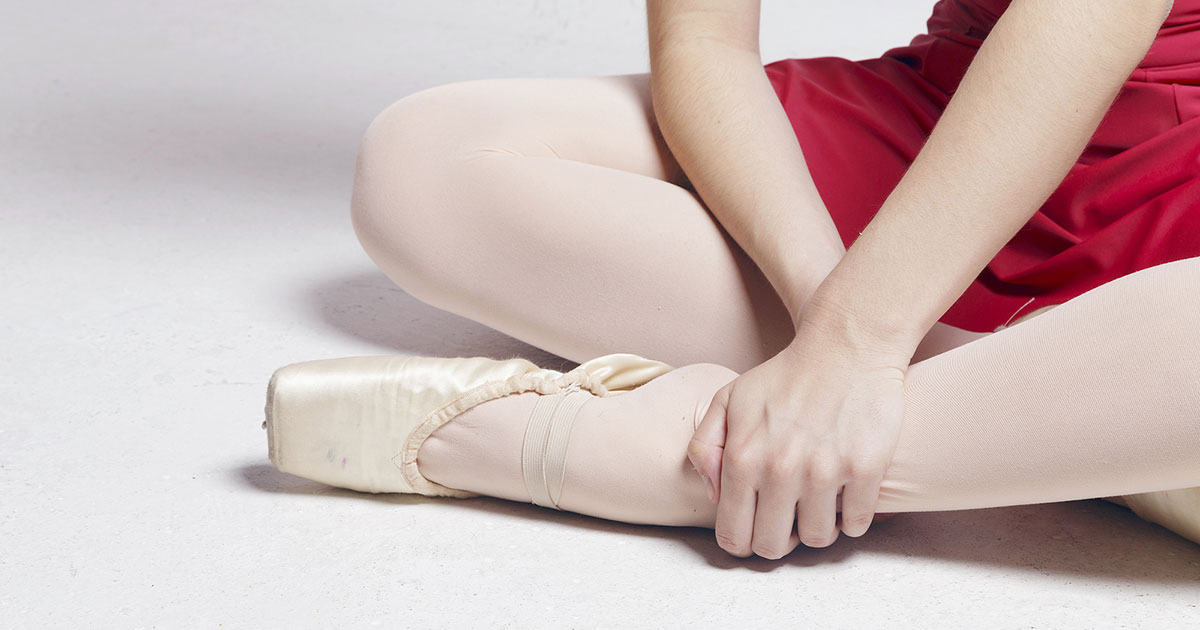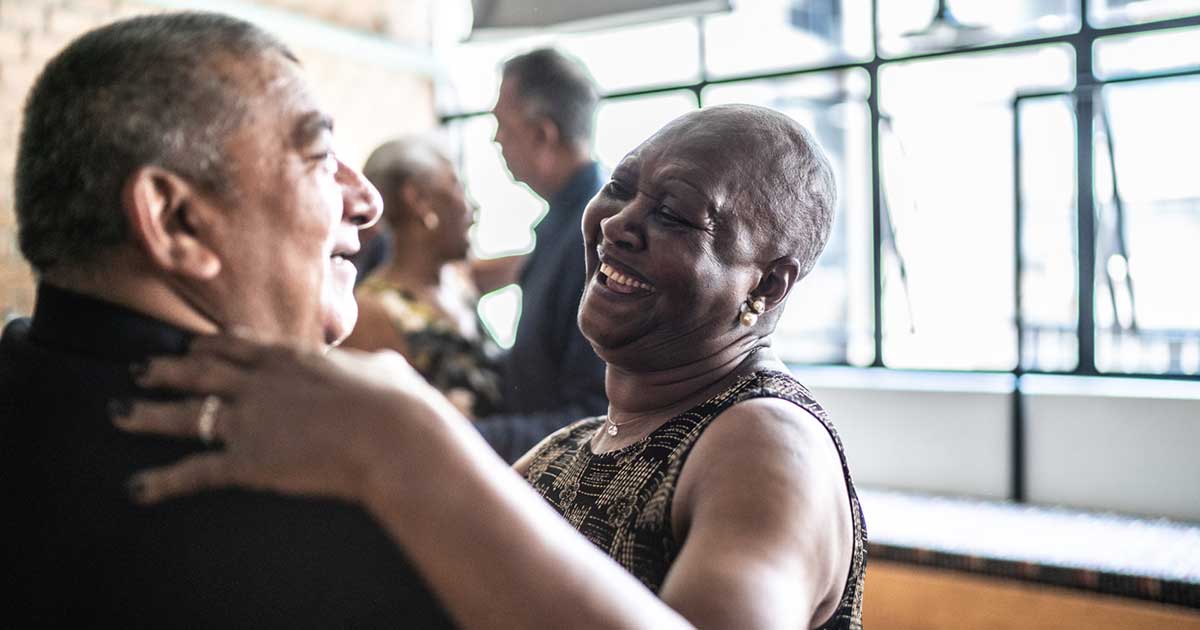Preventing Ankle Sprains in Dancers
Advice to improve your movement, fitness, and overall health from the world's #1 in orthopedics.
What are ankle sprains?
A sprain is when the ligaments that support a joint are stretched beyond their limits causing damage to that ligament. The severity can range from minor damage to a full tear of the ligament. There are many ligaments in the ankle that can be injured with the most common being the ligaments on the outside of the ankle. This is called a lateral ankle sprain.
Ankle sprains are the most common traumatic injuries in dancers. Once a ligament in the ankle is sprained, there is an increased risk of recurrent sprains. This is why it is important to take measures to prevent ankle sprains from occurring.

Tips for preventing ankle sprains:
Wearing proper shoes is important to prevent ankle sprains. If you have a history of ankle sprains, then a more supportive style or brand of shoe may help prevent future sprains. The best way to know what will be the safest option for you is to have a professional fitting done. Make sure to replace your shoes at the recommended intervals. The more you dance on your shoes, the sooner you will need to replace them as the supportive structures will wear out.
A proper dancing surface is also a consideration. Avoid dancing on uneven surfaces. If your style of dance involves jumping, then a sprung floor is the safest option due to good shock absorption
Research shows performing core stabilization exercises can help reduce the risk of ankle sprains. There are many examples of core stabilization exercises that you can incorporate into your routine. A common core stabilization exercise is the plank.
- Front plank: Perform on forearms and toes. Keep the core engaged and maintain a neutral spine. For increased challenge, lift one leg then flex and point both feet before repeating on the other side. Perform for 30 to 45 seconds or until you feel fatigue and you cannot maintain your form.
Keeping your hip and gluteal muscles strong can help prevent increased pronation or inward rolling of your foot. This can be especially important when jumping to prevent ankle sprains. Band walks are a great way to target the hip muscles
- Band walks: Begin with a looped band around your legs. Keep your knees unlocked and feet slightly apart. Begin taking steps to the side making sure to always keep tension on the band. Make sure to keep toes pointing straight ahead and maintain an upright torso. To start, the band can be around your knees or for more of a challenge lower to ankles. For even more of a challenge, have the band around the balls of your feet.
Having strong muscles in your feet gives a good base for the ankle and helps improve stability. (Find specific exercises to help alleviate foot pain in “Home Exercises for Dancers with Sore Feet.”
Strengthening the muscles in your ankle will help give dynamic stability to the ankle and help prevent injury. A study performed by the Australian Ballet found that dancers that were unable to perform 25 single leg heel raises in parallel were more likely to be injured.
- Single Leg Heel Raise: Begin standing on one leg in parallel with your hands resting on the bar for balance only (do not use it to pull yourself up). Slowly lift your heel maintaining all of your toes flat on the ground. Make sure to keep the ankle in a neutral position avoiding sickling (allowing the ankle to roll out) or fishing (allowing the ankle to roll in). Perform as many reps as you can until you are fatigued or you start to lose the height of the heel raise. Perform every day. Slowly build up to 25-30 repetitions.
Another key factor to address is balance and proprioception. What is proprioception? Proprioception is the sensation of where you are in space. Often if you have a history of an ankle or a foot injury you can lose this sensation or it can become impaired. Performing balance exercises is a great way to improve your proprioception. Some examples of balance exercises include: single leg balance with eyes closed, the airplane, and toe taps.
- Single leg balance: Stand on one leg with your opposite leg in a detached passé. Close your eyes, try to maintain your balance for 30 seconds without scrunching your toes. Perform in parallel and repeat in turn out.
- The Airplane: Begin standing on one leg in parallel. Lift your other leg behind your into an arabesque and lean your upper body forwards so you are in a straight line from head to toe. Your arms will start out to the side in a T position (2nd position with the elbows straight). From here, slowly demi plié and reach your fingertips together and towards the floor without changing the straight line from your head to your toes. Return to the starting position and repeat 5 times
- Toe Taps: Begin standing on one leg. Slowly reach your other leg forwards and tap the ground in front of you as you demi plié the standing leg. Repeat the tap to the side and then again directly behind you. For more of a challenge, perform this while standing on a foam cushion or pillow. Perform in parallel and repeat in turn out.
Follow these tips to minimize your chance of an ankle sprain. If you do sprain your ankle, do not ignore it as it can become a recurrent condition. Reach out to a health professional specializing in dance medicine to get checked out and see what the best treatment plan is for you.
Published 2/17/2023




